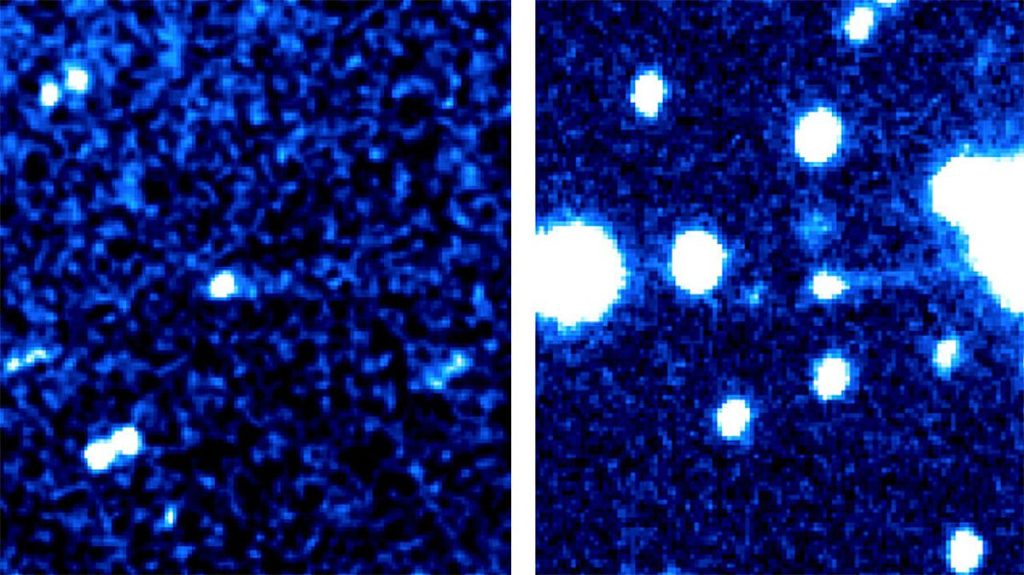
Scientists find secret comet in the asteroid belt — how many others are there? (Image Credit: Space.com)
A new “main-belt comet” — a comet-like object masquerading as an asteroid in the asteroid belt between Mars and Jupiter — has been identified, bringing the tally of these beguiling objects up to 14.
Along with “dark comets,” which scientists think make up 60% of all near-Earth objects, main-belt comets belong to a broader population with the umbrella moniker of “active asteroids.” In general, all of these objects are on orbits typical of asteroids, but they display signs of activity — in particular, they exhibit “outgassing” to form a coma and a tail just like a comet. They therefore blur the lines between rocky asteroids and icy comets, showing that pigeon-holing such bodies as one or the other can be a futile effort.
The term “main belt comet” was coined by Henry Hsieh of Arizona’s Planetary Science Institute and Dave Jewitt of the University of California, Los Angeles in 2006, when just three such objects were known. The latest to be discovered, catalogued as 456P/PANSTARRS (meaning that it is the 456th periodic comet known, and was discovered by the Pan-STARRS project), is just the 14th main-belt comet to be found.
“There are still very few confirmed main-belt comets known,” said Hsieh in a statement. “We want to build up a population so we can get a clearer idea of what their broader properties are — such as their sizes, activity duration and distribution within the asteroid belt, for example — so that they can be better used to trace ice in the solar system in general.”
Pan-STARRS, the Panoramic Survey Telescope and Rapid Response System, consists of two observatories in Hawaii and is designed to spot asteroids and comets in the night sky, as well as other transient phenomena. It discovered 456P/PANSTARRS in 2021, when the object appeared to be active with a small dusty tail.
However, sometimes asteroids begin ejecting dust when they collide with other small asteroids or meteoroids — the Hubble Space Telescope, for example, has captured examples of this happening. While such incidents fall under the umbrella title of active asteroids, they are short-lived and do not outgas in the same manner that comets do. So, a question remained: What type of active asteroid was 456P/PANSTARRS?
Hsieh, along with Scott Sheppard of the Carnegie Institution for Science and Audrey Thirouin of Lowell Observatory, have spent the past few years keeping tabs on 456P/PANSTARRS. This intriguing object was discovered when it was 3.35 astronomical units (501 million kilometers, or 311 million miles) from the sun. When the eight-meter Gemini South telescope in Chile observed it in June 2023, at a distance of 3.37 AU (504 million kilometers, or 313 million miles) the activity had switched off. But then, the 6.5-meter Walter Baade Magellan Telescope at Las Campanas in Chile and the 4.3-meter Lowell Discovery Telescope in Arizona, observed 456P/PANSTARRS on Oct. 3 and Oct. 26, respectively. Both telescopes found that a small tail pointing away from the sun, just like a comet, had returned. At the time, 456P/PANSTARRS was closer to the sun at a distance of about 2.86 AU (428 million kilometers, or 266 million miles).
“This object is not just an asteroid that experienced a one-off event that caused it to show activity one time, but is an inherently active, icy body similar to other comets from the outer solar system,” said Hsieh.
The activity on the main belt comet re-ignited because, closer to the sun, heating causes water and carbon-dioxide ices just beneath the surface to sublimate into gas and burst out, carrying dust with them to form a tail that points away from the sun. That tail then gets blown by the outward-flowing solar wind. This is exactly like the behaviour of a comet, with the activity repeating every time it nears perihelion (the closest point to the sun in its orbit).
The Gemini South observations indicated that 456P/PANSTARRS has a nucleus that is about 0.6 miles (1 kilometer) across. Still, the team wondered how this object and the other main-belt comets came to find themselves in such asteroid-like orbits around the sun. Normally, comets have long, looping orbits, whereas asteroid orbits are more circular (though not perfectly circular, as 456P’s varying distance from the sun shows). The current thinking is that they formed close to where they are found now, and that the “snow line” – the boundary between where ice could and couldn’t exist in the protoplanetary disk that formed the solar system 4.6 billion years ago, wasn’t as sharp a boundary as we thought.
It means that main-belt comets could be another window into the past, and by staring through them we can get a little glimpse of our solar system’s birth.
The findings were published in November in the journal Research Notes of the AAS.





